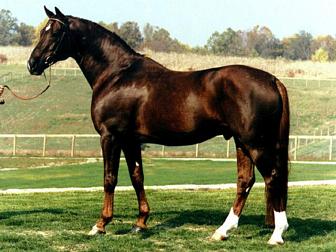
OVERVIEW
The Westphalian, like all German Warmbloods, is named after the area in Germany from which it originates (the Trakehner being an exception). The horse is, today, an important show horse with the Olympic and National Riding Schools being located in Westphalia. Closely related to the Hanoverian, the Westphalian is slightly larger due to its ancestral work on farms and in the army.
PHYSICAL DESCRIPTION
The Westphalian is basically a larger version of its neighbor, the Hanoverian. It has an attractive head that shows a slightly concave profile. The body is muscular and the croup flat.
ORIGIN
The Westphalian's background is basically a refined version of the heavy farm horses used in the area. Hanoverian blood was then introduced, resulting in a horse of great conformation and show ability. As one of today's leading competition breeds, the Westphalian must pass rigourous tests before they are permitted to breed. Conformation, character, pedigree, and riding are all tested over a period of four and a half years before a horse is selected for breeding.
INTERESTING FACTS
Warmblood breeding in German is handled differently than in other areas of the world. Stud books are organized according to the area in which a horse is born, not by its background. This can sometimes lead to a horse entered into one stud book, but showing the conformation of another breed.
INFLUENCES
1. Thoroughbred
2. Hanoverian
3. Arabian
For more information:
Westfalisches Pferdestammbuch e.V.
Sudmuhlenstrasse 31-35
Postfach 460106
D-4400 Munster-Handorf
GERMANY
Westfalen Warmblood Association
of America
18432 Biladeau Lane
Penn Valley CA 95946
Phone: (916) 432-2760